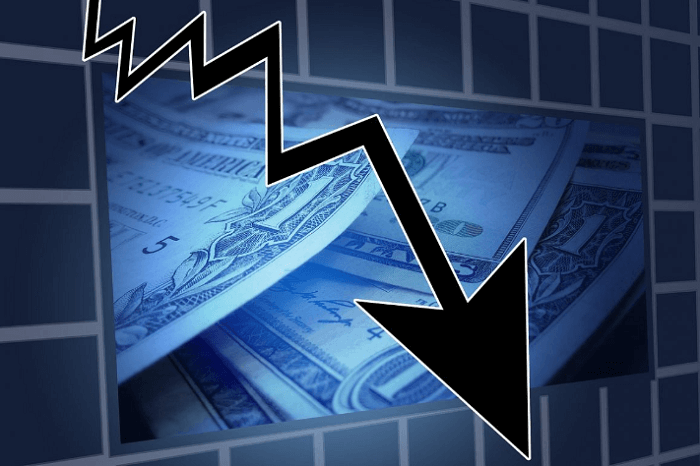Since the beginning of the Industrial Revolution, industrial production has been the lifeblood of every country's economy, and its importance cannot be overstated. That's why there is the Industrial Production Index (IPI), a barometer for measuring the industrial economy. And if you are an investor, you know that one of the market's movers is a country's IPI. Generally, people treat it as an important economic indicator.
 What does IPI mean?
What does IPI mean?
Its full name is Industrial Production Index (IPI), which is an index compiled on the basis of the total industrial production of a country or region within a certain period of time and is commonly used to calculate and reflect the speed of industrial development, generally including data on manufacturing, mining, utilities, etc. In the U.S., for example, the IPI is composed of the total production of the U.S. economy and the total production of the U.S. economy. In the United States, for example, the IPI is collected by the U.S. Federal Reserve Board. The data from 250 enterprises is used as a sample, representing 27 different industries. The results of the calculation are published on the 10th of every month.
It is an important economic indicator that reflects the boom situation and development trend of the industrial economy over a certain period of time. It is usually based on production in the base year and then compared against actual production at different points in time. This allows analysts to understand the trend of growth or decline in industrial production.
If the IPI continues to grow over a period of time, it indicates that the country's economy is performing well, and vice versa, the economy is turning weak. And the state of a country's economy usually affects the performance of its currency. Therefore, in the foreign exchange market, IPI is also an indicator that investors refer to when trading.
And this index can not only show whether the economy is good or bad, but it can also give a closer look at what industries are performing well or not.
In Taiwan, for example, the scope of the index survey includes the monthly production volume, domestic and foreign import volume, self-use volume, and domestic and foreign sales volume value. As well as final and intermediate goods and raw materials.
The final goods refer to the goods used by consumers, enterprises, and government organizations, while the intermediate goods refer to the intermediate input materials provided to the construction industry and the agricultural service industry. Raw materials are the outputs of upstream industries that only need to be reprocessed by each industry. This index is a good indicator of the upstream, midstream, and downstream conditions of industrial production, so it can more accurately reflect the current state of Taiwan's industrial production.
At the same time, this index can also predict the trend of the economic climate in advance. Still, take Taiwan as an example; its current is based on 2001 as the base period to compile, which is the index of each. Look at the recent performance of Taiwan's IPI. When the annual growth rate of the index trend is gradually declining, on behalf of the manufacturing, housing, and construction industries, mining and other production continue to weaken, for the industrial boom has become a symbol.
But as the economic growth index continues to rise, the faster the growth represents the industrial development of the situation, the better, since the industrial development of the good, along with the economic data, can also be expected to have a positive effect on future performance.
Looking at the characteristics of the index, it can not only be used to illustrate the short-term changes in production volume but can also be used as a way to observe the long-term changes in the industrial structure and the decline. The change in production volume is mainly due to the supply-and-demand situation in the market. Therefore, it is possible to predict the trend of Taiwan's economic prosperity in advance from the changes in the IPI.
The index has many advantages; its calculation method is widely used internationally, which makes it convenient to make direct comparisons with other countries. In addition, the IPI is highly productive and does not go out of date. The data is updated every month, so people can get first-hand information at any time. But on the other hand, IPI is compiled by taking representative products of a certain industry as samples, so for some industries with a wide range of products, such as the electronics manufacturing industry, the effect of applying its index is not so satisfactory.
Because it provides key information on economic conditions and trends, it helps to formulate policies, make investment decisions, and plan production activities. This indicator is commonly used to monitor the overall health of the economy and is considered an important component of macroeconomic statistics.
What does the Index of Industrial Production mean?
| IPI |
Description |
| Definition |
measures a country's overall manufacturing, mining, and utilities output over time. |
| Full name in English |
Industrial Production Index (IPI) |
| Data Source |
Typically gathered and released by government or statistical agencies. |
| Primary Use |
Evaluates industrial trends, analyzes sector performance, and predicts economic trends. |
Calculation formula
The formula for calculating the IPI is usually based on the following general form:
IPI = (P/P0) × 100
where.
IPI: Industrial Production Index, i.e., the index to be calculated.
P: the actual volume or value of production during the current period (usually a month or a quarter).
P0: the volume or value of production in the base period (usually a specific year).
The calculation stEPS are as follows:
Select a base year (usually 100 or another conveniently calculated value).
Identify the industrial sector or area to be monitored and determine the relevant production data for the current and base periods. These data can be actual production quantities, value of output, volume of output, etc., depending on the industrial production activity being monitored.
Using the above formula, divide the actual production data for the current period (P) by the corresponding data for the base period (P0) and multiply by 100 to calculate the IPI.
What type of indicator does it belong to?
The IPI is, of course, an economic indicator, but one wonders if it is a composite index of quantitative indicators. This needs to be judged according to the definitions of both.
Quantitative indicators are used to measure actual quantitative data such as production, output, and output of a particular field or industry. The index is used to measure production activity in the industrial sector, so it focuses on the actual quantity or value of production.
Composite indices are usually composite indices that take multiple indicators into account, such as the Composite Consumer Price Index (CPI), the Composite Production Index (PPI), etc. They may include a combination of multiple quantity indicators as well as other factors to provide more comprehensive economic information.
Therefore, the IPI is not a composite index but more of a quantitative indicator that mainly reflects the production of the industrial sector. Of course, the IPI is an extremely important economic indicator in the eyes of investors, businesses, and governments.
Industrial production index Consumer price index Stock price index
| Indicators |
Type |
Main uses |
| IPI |
Quantity Index |
Measures industrial output, analyzes economic sector trends. |
| CPI |
Price Index |
Measures living costs, assesses inflation impact on consumers. |
| Stock Price Index |
Financial Indices |
Tracks stock market, reflecting overall trends. |
Actually applying
Used in conjunction with the Manufacturing Sales Index
The Industrial Production Index represents the production status of the industrial and manufacturing sectors, while the Manufacturing Sales Index directly reflects the sales status of the manufacturing sector. One is the production side, and the other is the sales side. By bringing the two together to make a judgment, you can more accurately grasp the market state.
Two, if synchronized up, are more obvious on behalf of the industrial activity recovery trend. Two synchronized declines represent the weakening trend of industrial activity, which is more obvious. If the two are rising and falling together, it means that industrial activity is either recovering or weakening, and the trend is still unclear and needs to be monitored.
in conjunction with capacity utilization
The so-called capacity utilization rate is the ratio of production equipment, which mainly reflects the idle status of industrial production equipment.
The higher the utilization rate, the lower the idle status, and the more active the industrial activity. If the two synchronized rise, it means that the trend of the industrial climate has been established. Two synchronized declines represent the establishment of the trend for industrial sentiment to deteriorate. One up and one down represents the industrial climate performance trend, which is not yet clear and still needs to be observed.
Disclaimer: This material is for general information purposes only and is not intended as (and should not be considered to be) financial, investment, or other advice on which reliance should be placed. No opinion given in the material constitutes a recommendation by EBC or the author that any particular investment, security, transaction, or investment strategy is suitable for any specific person.



 What does IPI mean?
What does IPI mean?























